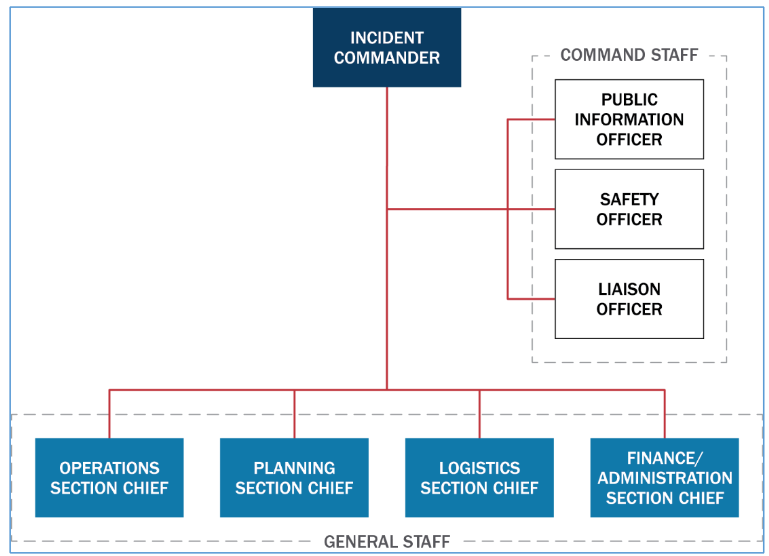As the public face of the police or fire department or government agency the Public Information Officer (PIO) plays a crucial role in maintaining public trust and confidence. They are responsible for disseminating information to the public and media about emergency activities, including major incidents, fires, natural disasters arrests, and investigations. As we train chiefs and PIOs at JGPR Academy and as we practice every day at the JGPR offices, the PIO must ensure that the information is accurate, timely, and transparent, while also balancing the need for confidentiality and sensitivity in certain situations.
In order to fulfill their role effectively, the PIO must have direct access to the top.

This means that even if a PIO is a private firefighter or patrol officer — even if their day-to-day supervisor is a police sergeant or fire district chief — in the incident organizational chart the PIO reports to the top when doing PIO duties. In agencies with multiple PIOs, the head PIO reports to the top and all other PIOs report to that person.
That’s a lot of PIO talk. But it can save your agency.
In the practical sense, JGPR PIOs have attended live training simulations where our clients were deducted points because the IC assigned the PIO to a separate location or ordered them to report to a section chief during a critical incident. It’s a violation of ICS protocol.
As in the corporate world, public relations — PIO duty is a branch of public relations — is only truly effective if practitioners report to the top and have access to all levels, top to bottom, to do their job.
This allows them to obtain accurate and up-to-date information about ongoing incidents, investigations, and other police activities. It also enables them to provide timely updates to the public and media, which is essential for maintaining public safety and confidence in law enforcement.
Whether your agency is a police department, fire, emergency management, public health, public works, water/sewer, or the town manager’s office, the PIO serves as the primary liaison between a government department and the public, and having direct access to the boss allows for quick decision-making and dissemination of critical information. It can also prevent incorrect or impartial information — or out-and-out lies — from making their way to the public.
Here are some examples of why direct access to the Chief/Director/boss is important for a PIO:
- During a government crisis or a public safety critical incident such as a natural disaster, terrorist attack, or active shooter situation, the PIO needs to be able to quickly obtain accurate information from the top to inform the public and media. Having direct access allows the PIO to obtain this information in a timely manner and avoid miscommunication.
- In the event of a police shooting or other use of force incident, the PIO needs to be able to obtain information from the Chief of Police to provide accurate and transparent information to the public. Having direct access to the Chief of Police allows the PIO to quickly gather and disseminate this information. A PIO should never report to a middle manager/supervisor during critical incidents.
- The PIO may also need to coordinate with other agencies during critical incidents, such as the fire department, emergency medical services, or local government officials. Having direct access to the Chief of Police allows the PIO to quickly communicate with these agencies and ensure a coordinated response to the incident.
FEMA ICS and NIMS training reinforces the guidance that PIOs should report to the top — chief/incident commander/director/etc. For more information, visit FEMA.gov.
